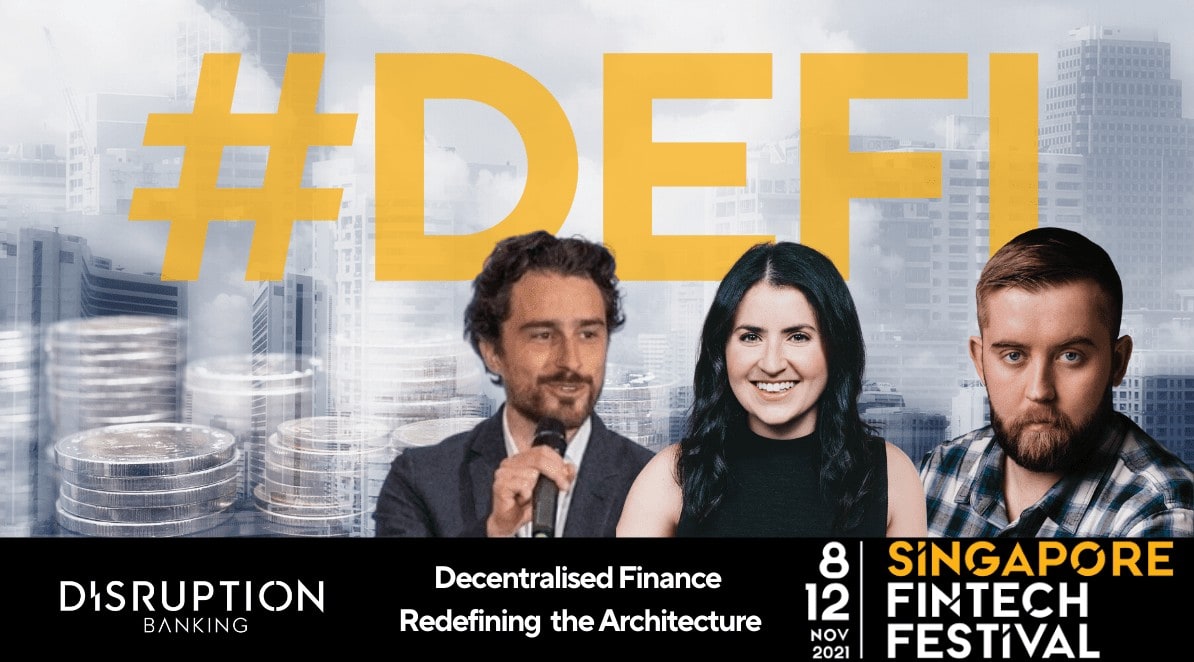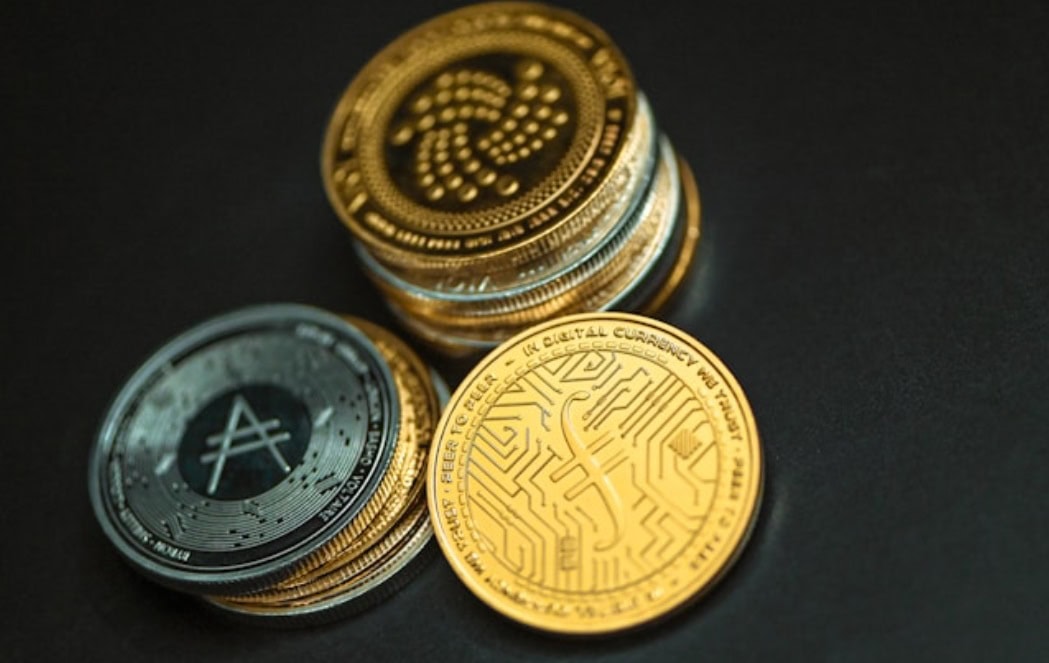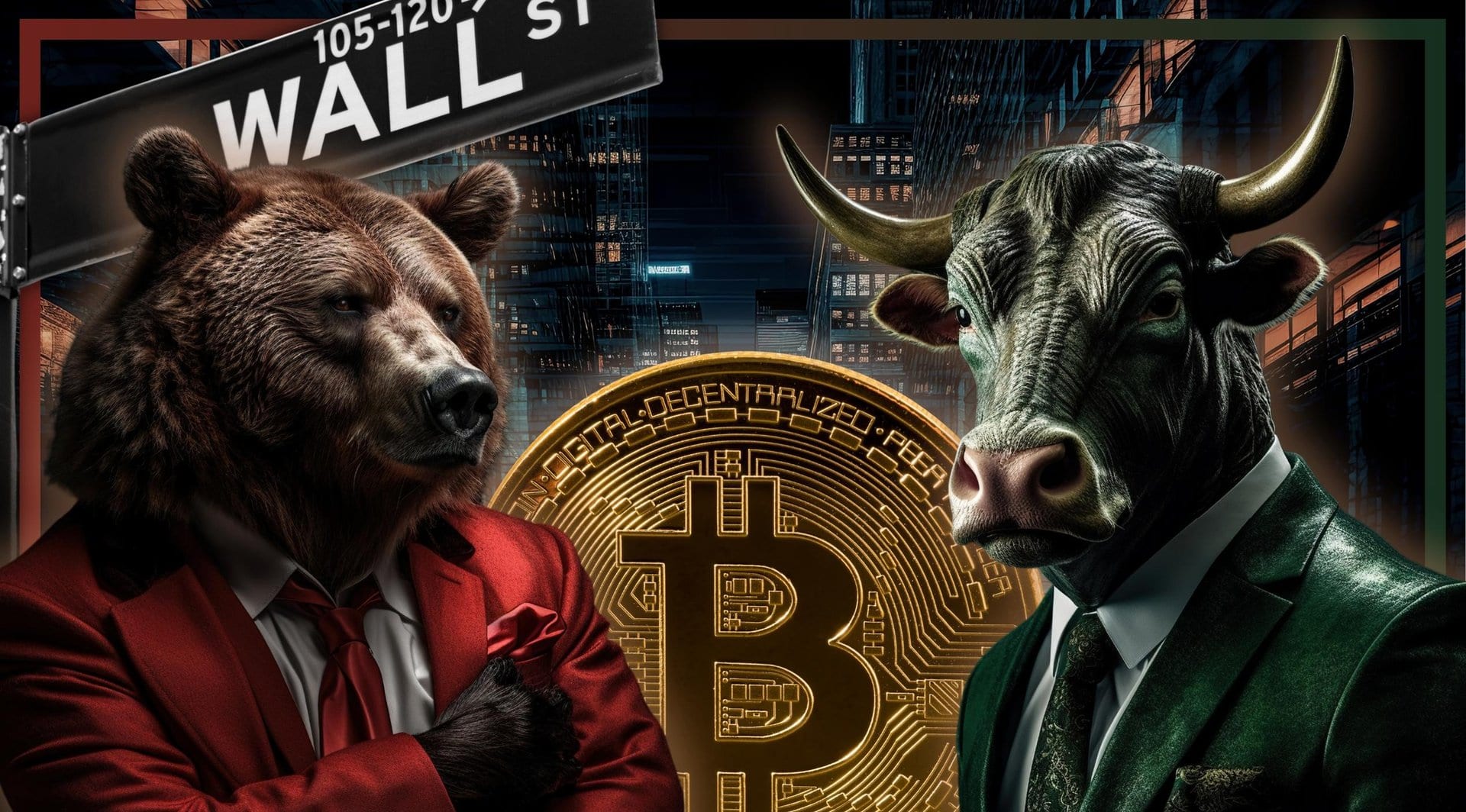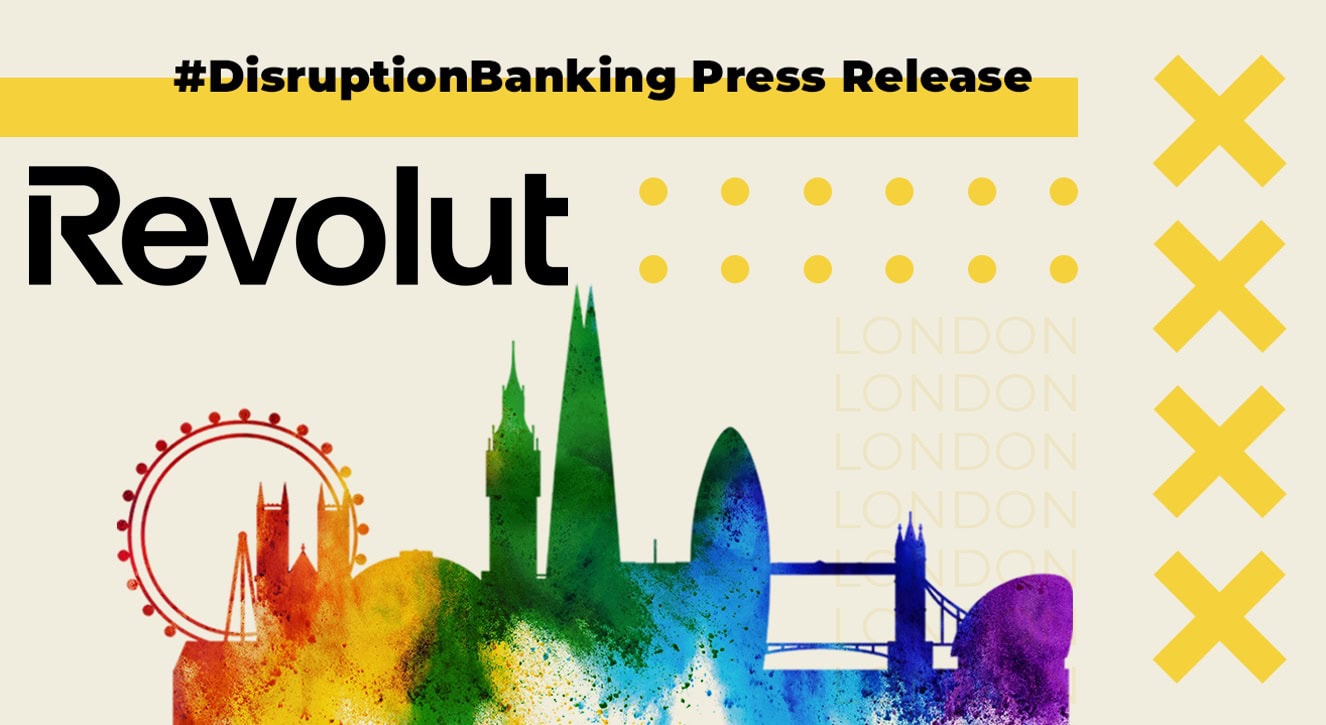It’s been a vigorous first day at the #SgFinTechFest. The Festival has already over-exceeded expectations after the first day. While stablecoins haven’t come up quite as much as at other FinTech events, crypto was out in full force. Moderated by Morgan Beller, General Partner of NFX, Sergey Nazarov, Co-Founder of Chainlink and Rene Reinsberg, Chief Executive Officer & Co-Founder of Celo met to discuss all things DeFi.
Nothing like an invigorating #DeFi discussion to make sure you are participating in the largest Fintech Festival in the world#SGFinTechFest pic.twitter.com/JN10yW7FRi
— #DisruptionBanking (@DisruptionBank) November 8, 2021
#DisruptionBanking brought you news about Chainlink in our story from July. The Oracle Problem that Chainlink and other members of the DeFi eco-system face, was the main topic. The enigmatic ChainLinkGod.eth 2.0 played a large role in the story. With over 120,000 followers on Twitter the ‘symbol’ or ‘mascot’ of the Chainlink ecosystem is an ambassador to all things DeFi.
Many consider Sergey, of Chainlink, and Rene, of Celo, to be stalwarts of the DeFi ecosystem. Only last month, #DisruptionBanking brought you news of some of the exciting things happening at Celo. For instance, how the Celo platform is involved in projects from Kenya’s Maasai to ‘green’ bitcoins.
Both gentlemen have a large role to play in anything DeFi in the future, so this discussion was of particular interest on the first day of Singapore Fintech Festival.
Decentralised Finance (DeFi) – Redefining the Architecture
Introducing DeFi, Sergey explained how you have full control through private keys. And “you have full transparency through the protocol you gave the asset to. And you’re also getting anywhere from 2 to 8%. So, you’re getting more transparency, you’re getting more control and you’re getting better returns. That’s the simplest, in my experience, most straightforward way to explain DeFi.” Not to mention that it’s redefining the global financial system because of all these benefits.
“Why would I want to give my money to a financial system where I have no transparency about what’s going on? Why wouldn’t I rather give my assets to a system where I have complete transparency about what’s going on with the system?” Sergey questioned.
“Imagine if your bank’s internal operations and back end were completely open to you. And you could just look at every single decision your bank ever made. That’s what DeFi is. It’s basically superior returns with less risk and more control. That’s what the financial system tries to do, and that’s what DeFi is doing better.” Sergey thinks that this is how DeFi is redefining the core value proposition of financial products in the financial system.
Rene agreed, adding how “current markets are not efficient in a way that you would hope they are. They’re not [financial products] as inclusive or not as accessible.”
Pointing to the spot market for euro dollars, Rene explained how “It’s $5 or $6 trillion a day in trading volume and there’s really no reason that shouldn’t happen on the ‘chain’, right? In dollar euro stable coins. And then you can expand that into all currencies. You can expand this into futures derivatives markets.” When this might happen, Rene thinks is unclear, however that it will happen he has no doubt.
How far can DeFi grow?
Returning to the value of assets in the DeFi ecosystem, one of the best places to view this is at DeFi Pulse. When #DisruptionBanking started covering DeFi in more depth in October 2020, the values were as little as 10% of what they are today at around $11 billion. Today they are already above $100 billion and growing:
💰Total Value Locked in #Ethereum #DeFi has crossed $100B for the first time, according to @defipulse🚀
— The Defiant (@DefiantNews) October 20, 2021
💥It's taken just 15 months for the market to 100x in size from $1B in July 2020.@BradyDale reports👇https://t.co/lvuuOKXQL7 pic.twitter.com/8DojMNfUrL
Sergey thinks there is much more to come. “We are at low single digit percentages of value that can flow even just from the crypto formatted value. I am not even talking about the derivatives industry, or the equities industry or the real estate industry, or the commodities industries.”
Sergey further explained how DeFi is a big open-source bank. With only $100 billion in the tank. “We haven’t even fuelled the rocket yet,” he said. Adding that “the fuel to the rocket just got connected and we just started pumping some of the fuel into it.”
“DeFi is basically what we call a hybrid smart contract. In that its’ made up of equal parts: chain code that runs on a blockchain and stores the state of the contract. Takes in private key commands, and that’s what people kind of understand about DeFi.” Sergey continued.
“There’s actually a whole other part of DeFi which is the off-chain part. Which is the trust-minimised and validated data, triggers about time, and all the other computations that also need to be trust-minimized. That also need to be highly trustworthy and transparent.
“So DeFi is not just a fully on-chain contract. It’s a partly on-chain contract, and a partly off-chain Oracle network. But, without Oracles and without what the payment network provides in the form of data. It’s very difficult to build reliable DeFi agreements, in many cases even impossible. Oracles are the missing piece of the puzzle.” Sergey concluded.
DeFi 4 the people
Returning to Celo, who are currently in the middle of their #MakeCryptoMobile hackathon:
It's tool time! 🛠️
— Celo 🔦 (@CeloOrg) November 3, 2021
Check out this thread on the various tools for developers building on @CeloOrg to #MakeCryptoMobile.
25 more days until the hackathon closes, sign up today 👉 : https://t.co/tWgjRmdHws https://t.co/jE6PtTeOpg
Other hashtags such as “DeFi4ThePeople” are others that you will see surrounding Celo, Rene explained.
Another theme that was explored during the discussion was how DeFi has become, what can only be described as, ‘mobile-friendly’. Rene shared how “we’re seeing this massive pool of people wanting to use the phone. Mobile people wanting to build mobile DeFi”. He pointed to how Ubeswap, who are on Celo, have 86% of their visitors from mobile phones.
“We see this [mobile] as a big enabler towards getting mass adoption.” Rene explained. However, he also eluded back to Sergey and Chainlink, explaining how during their current hackathon at Celo, the topic of Oracles is one of the key questions: “When you want to build real-world applications, this is definitely the key infrastructure you need for DeFi and beyond.”
“One thing that I’ve come to really appreciate is that in this broader ecosystem, we’re just two lights [Celo and Chainlink] on this big map, right? I think there’s so many strong teams building interesting, critical building blocks that all kind of fit together.
“No one of us, as a single team or project, is competing against the incumbent financial system and its shortcomings. But it’s a massive movement where everyone is picking a key building block and then bringing it all together, and that’s what’s been really powerful to see.”
The future for DeFi
Looking to the future, Sergey shared how he believed that this time next year DeFi will be more than $1 trillion in total value. Bearing in mind in the last year we have seen the same growth that Sergey is predicting for the coming year, some might consider this ‘conservative’. Sergey encouraged the audience to consider how regulated DeFi or “DeFi that institutions are comfortable using” is already in use.
“And I think there is going to be a substantial amount of uptake in consumer demand for DeFi level returns. Because inflation is going to be on everybody’s mind. And I don’t know of a single place where I can get 4 to 8% on something like the U.S. dollar. You can only get it on DeFi, right?” Sergey asked.
“Everyone’s going to start getting worried about interest rates. Not from the point of view of making money, but from the point of view of maintaining their ability to purchase even basic things.” He predicted. Whilst, on the topic of the “regulated financial industry” who, Sergey believes, already use highly scalable privacy preserving systems. He thinks they will use “chains and combinations of chains and Oracles to generate really advanced globally accessible decentralized financial products that have the same numbers that the existing financial system operates with.”
Rene agrees with the idea that the yields that DeFi currently offers will be the “entry point for many to this world.” Rene also shared how he thinks that there will be a billion people using DeFi in five years’ time, “not just using it for yield, but using it for their daily financial needs. They will be paid in stable coins, and they will keep their balance in a yield-bearing account.” Rene concluded.
"As a recent @WEF report argues, #Chainlink oracle networks enable traditional enterprise systems to interoperate with any blockchain without requiring a massive overhaul of their preexisting technology portfolio"
— ChainLinkGod.eth 2.0 (@ChainLinkGod) November 8, 2021
Middleware is the universal connectorhttps://t.co/P3PMjMk4WI
Firms like Chainlink and Celo are still considered ‘pioneers’ of the DeFi ecosystem. The size of the ecosystem, just like the value of the ecosystem, continues to grow. The subject of DeFi will keep coming up more and more. Just like bitcoin and cryptocurrencies have been creeping up on the world for the last ten years.
Sergey’s advice is “to get ahead of this [DeFi]. Just like there’s people who got ahead of the internet. It’s going to be the exact same story.”
For more of the biggest stories from the Singapore Fintech Festival, follow #DisruptionBanking on Twitter. Singapore FinTech Festival continues until November the 12th. It’s not too late to register.
Author: Andy Samu
#TrustMinimized #Oracle #DeFi #SgFinTechFest #StableCoin #Inflation #Regulated #Transparent #EcoSystem #Celo #Chainlink #ChainLinkGod














